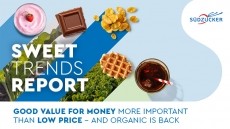EUDR: Answering the key questions

The European Union Deforestation Regulation (EUDR) will now, if the European Commission’s advice is heeded, be delayed until 30 December 2025 (30 June 2026 for small and micro undertakings). This means that businesses have longer to prepare for the regulation.
On the day of the announcement, the Commission released both a guidance document and a series of new FAQs, which aim to clarify some of the uncertainties around the legislation.
Below, we try to get to the heart of the key new information that showed up in the newly added FAQs.
Why is traceability important?
Traceability back to the plot of land a given commodity was produced (harvested or born) is crucial to ascertain that no deforestation has taken place. For this, geographic coordinates are needed.
Geolocation data is central to the regulation, and relevant commodities or products that do not include geolocation coordinates in their due diligence statements (DDS) cannot be placed on the EU market or exported from it.
Each batch of imported, exported or traded relevant commodities or products must be traceable. When in bulk, the commodity must be traceable to every plot of land. Likewise in a composite product . However, in a composite product containing multiple relevant commodities and products, the operator must only conduct due diligence on the main commodity and derived products. For example, if a chocolate bar contains cocoa powder, cocoa butter and palm oil, the operator would only need to do due diligence on the cocoa powder and cocoa butter, as the relevant commodity is cocoa.
For plots more than four hectares, for commodities other than cattle, data must be provided using polygons. There is no upper or lower limit to the size of land that can be logged, so long as within the plot of land there are relatively homogenous conditions allowing a reasonably accurate prediction as to whether deforestation has taken place within.
The rules for how polygons should be declared in digital format will be established through an implementing act, and will evolve over time.
Operators and non-SME traders must collect information as to the date and time range of a relevant commodity’s production in order to be compliant.
If a plot of land where a relevant commodity is sourced from is on the same estate as a plot of land where deforestation has occurred, this commodity is still compliant so long as no deforestation has occurred within the relevant plot of land.
For example, if a farmer sources cocoa from a deforestation-free plot of land, but the same property contains another plot of land where deforestation has occurred to source coffee, then the cocoa (not the coffee) is compliant.
However, if the deforestation that takes place there is illegal, then the commodity is no longer compliant, as its area of production (the estate) is breaking local laws.
In limited circumstances, operators can provide geolocation coordinates for a number of plots of land higher than those on which the commodity was produced, but only when it is a bulk commodity and not mixed with non-compliant or untraceable commodities. If said bulk commodity is mixed up along the logistical or production process, the operator can declare ‘in excess’. However, the operator maintains responsibility for this and if one linked plot of land is non-compliant, all others in the DDS are ruled non-compliant.

Traceability requirements must be conformed to. Even if a commodity is produced in a country where its government prohibits geolocation data to be shared with operators and traders, a commodity without this data will not comply with EUDR.
Field audits can be carried out in third countries by EU competent authorities if these countries agree.
According to the FAQs, the information system for the geolocation data will be launched mid-December 2024, although it is currently unclear if this will change if the EUDR is delayed. Geolocation data can be uploaded manually or via a file (the information system currently supports GeoJSON).
Definitions
The FAQs also clarified some important definitions, including:
- Deforestation – In the scope of the regulation, deforestation is the removal of forestry in order to gain the land for agricultural use. For any other use, such as to build a road, the regulation does not cover it. Rubber cultivation is, however, included in the definition of ‘agricultural use’. Cutting down trees is only a breach of the regulation if the trees are part of a forest.
- Forest degradation – Forest degradation, under the EUDR, means structural changes to forest cover, such as changing primary or naturally regenerating forests into plantation forests or other wooded land, or primary forests into planted forests. In the context of wood harvesting, the operator must be sure that it did not bring about these eventualities after 31 December 2020. Operators are liable for any forest degradation after this date even if it is unclear to them when doing due diligence. It is their responsibility to ensure no forest degradation has taken place. However, operators cannot be liable for events that take place after the submission of the DDS.
- Without inducing forest degradation – If a product or commodity is deforestation-free ‘without inducing forest degradation’, specifically in regards to products containing wood, it must have been harvested without a ‘causal link’ to forest degradation. This causal link must be there: the regulation does not cover other forms of forest degradation such as disease outbreaks or forest fires. In the case of forest degradation happening as a result of these things rather than human intervention, planting and seeding of trees for forest regeneration would not be considered the development of a ‘planted forest’ or ‘plantation forest.’
- Trees able to reach those thresholds in situ – Young trees that are expected to reach a height of five or more metres, or have a crown density of 10%, can be part of a forest under the FAO definition, as can temporarily unstocked areas whose predominant use remains forest.
What is the scope of the regulation?
The regulation makes an important distinction between those who place a relevant product or commodity on the market or export them, and those further down the supply chain. If a product is produced within the EU and then its ownership is transferred to another who then places it on the market, it is being supplied to the market.
Following a product being placed on the market, it is therein supplied for distribution. An operator is subject to the regulation if they are placing on the market a product listed under Annex I of the EUDR. Operators may use or process relevant products in their business; they are only in scope of the regulation when they’re supplying the market with them.

When empty packaging containing one of the relevant commodities is returned by the retailer to the supplier, so long as it is placed on or made available on the market in its own right rather than as packaging supporting another product, it is considered a new product and must fulfil due diligence requirements. However, second-hand products that would otherwise be disposed of as waste are not covered by the EUDR.
If the same company processes a product multiple times into different products, they must do due diligence on the relevant products, those listed in Annex I of the EUDR, only. The due diligence only applies on the last relevant product processed, rather than all of them.
What obligations do operators and traders have?
SME operators ‘further down the supply chain’ (meaning one who transforms a product listed in Annex I into another listed in Annex I, or exports such a product) are legally culpable in the event of a breach of the regulation.
However, they are not required to submit a DDS onto the information system or do due diligence for parts of products which have already had due diligence done for them. They must, however, supply due diligence reference numbers for previous steps in the supply chain, upon the request of the competent authorities.
Upstream operators will be able to decide whether downstream operators have access to their geolocation data.
If someone based outside the EU places relevant products on the EU, the must have a relevant EORI number to access the information system. Their access to the system will be in the role of operator.
The main access to the information system will be held by the competent authorities, whose responsibility it is to check it.
Depending on whether or not they place a relevant commodity or product on the market, a retailer can be considered an operator or trader.
In 2013, Directive 2013/34/EU altered the size of SMEs. However, this directive only applies in countries which have transposed it into national law, meaning that the adjusted size will only apply in terms of the EUDR within these countries, and only to companies established in the EU after these laws came into effect in the member state.
All operators retain responsibility for products they place on the market, and all non-SME traders for products they make available on the market. All operators and non-SME traders must communicate information along the supply chain. The regulation makes no distinction between whether or not a company is a member of a group.

Products produced (harvested or, in the case of cattle, born) before the coming into force of the regulation on 29 June 2023 are exempt from the regulation. However, the burden of proof is on the operator for this. Products placed on the market during the transitional period are also exempt, although competent authorities have the right to check this and the burden of proof is on the operator. The transition period spans from the day the legislation came into force – 30 June 2023 – to the day before it goes into application.
In order to ascertain that a product was placed on the market before the date the regulation entered into application, proof is required. For imported products, a customs declaration is sufficient. For products produced in the EU, documentation relating to the production can be supplied.
Products exempt because they were placed on the market during the transition period can, providing all the correct evidence was supplied, be mixed together. Only those commodities newly placed on the market require a DDS.
What necessary due diligence must be carried out?
Once operators have collected and organised their due diligence information, it should be kept for five years. When conducting due diligence, commodities should look back to the cut-off date of 31 December 2020, to see if the land used to be a forest within this window. No documentation is required for products produced with commodities out of scope of the regulation.
The EUDR provides a template for the DDS and it is the same for all commodities, although there are no set questions for the due diligence process. Operators and traders submitting a DDS must register on the information system.
A DDS can cover multiple shipments or batches, so long as due diligence was carried out on all relevant products, and that the DDS does not cover a period of over a year (as operators must review their due diligence systems once a year). The date of a DDS, when products are produced within the EU, should be from the earliest point said product was phyically available on the market.
While satellite imagery can be useful in ascertaining whether deforestation has taken place, the regulation does not impose its use as part of conforming to the regulation.
Products produced outside of the EU do require customs clearing. Only a customs declaration is sufficient in this context.
After the first year that the regulation is in in application, non-SME operators must produce an annual report about their activities to comply with the EUDR, although companies who have reported relevant activities in response to other EU legislation (such as the CSDDD) do not have to repeat this reporting.
What penalties will non-compliance incur?
It is the EU member states that must lay down the national framework of penalties, and have discretion to define the penalties. This includes the level of fine, although it can not be lower than 4% of the operator or trader’s union-wide revenue in the financial year preceding the fine. It should increase where necessary, the FAQs state, and should ‘effectively deprive those responsible of the economic benefits derived from their infringements.’ Member states should notify the European Commission about final judgements in these matters.
However, in regards to the Public Procurement Directive, it is not for member-states to decide whether they want to enact self-cleaning (when a company cleanses itself of the elements that lead to misconduct).
























